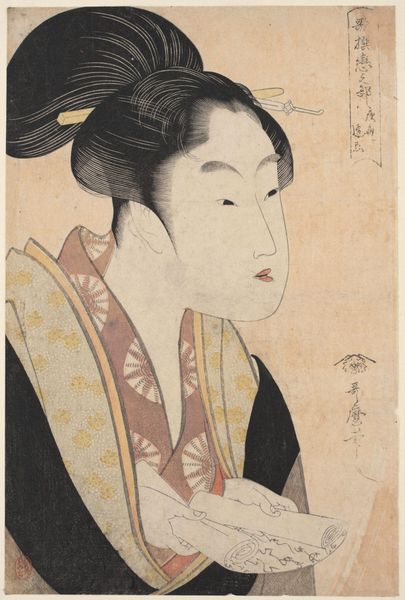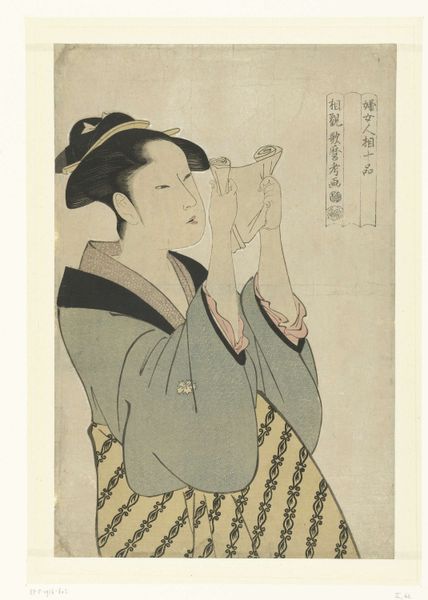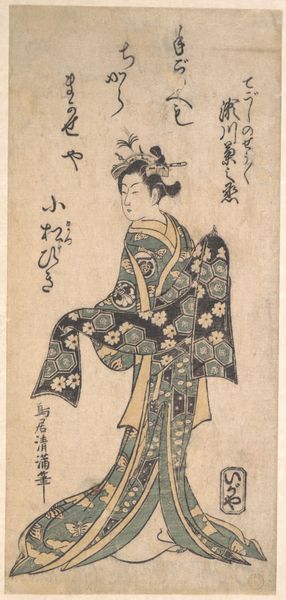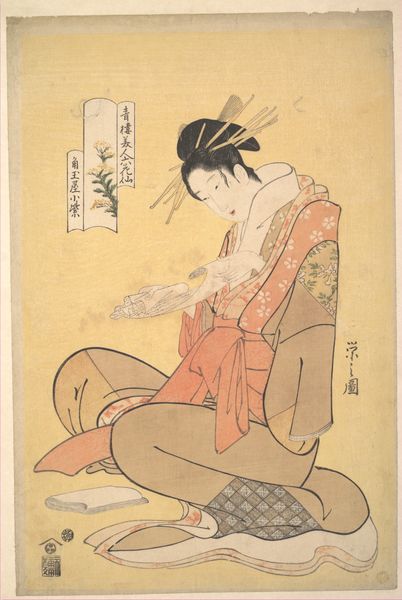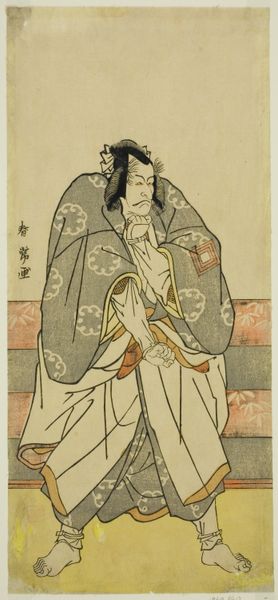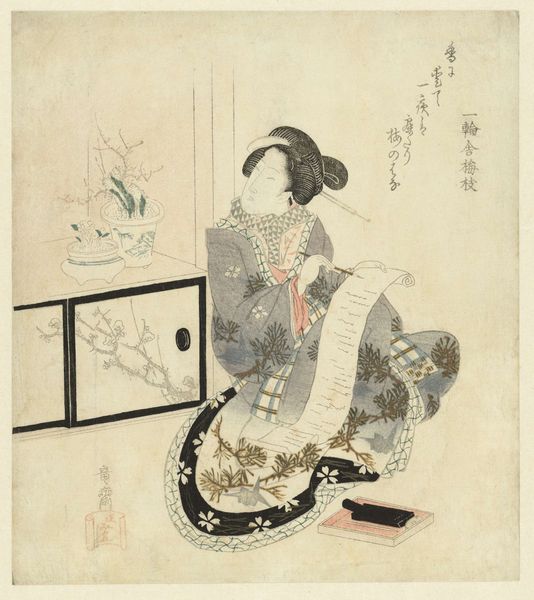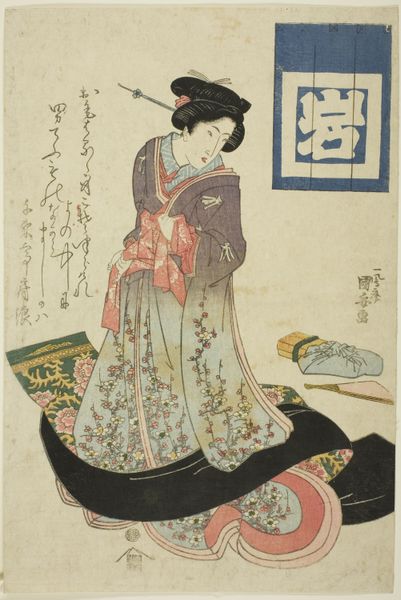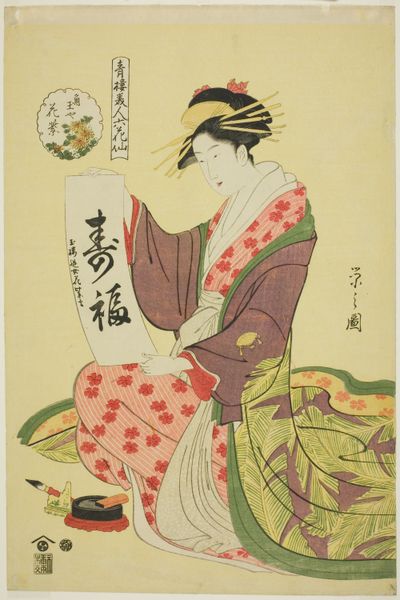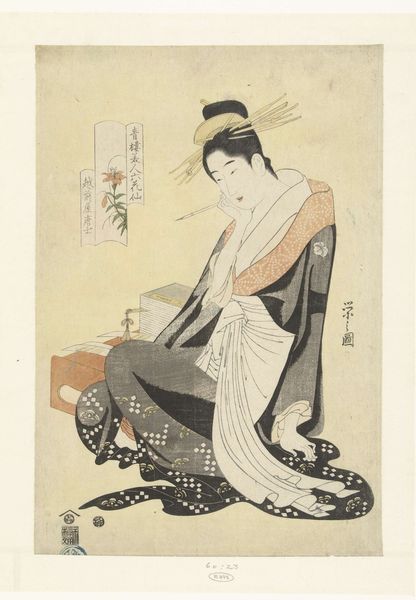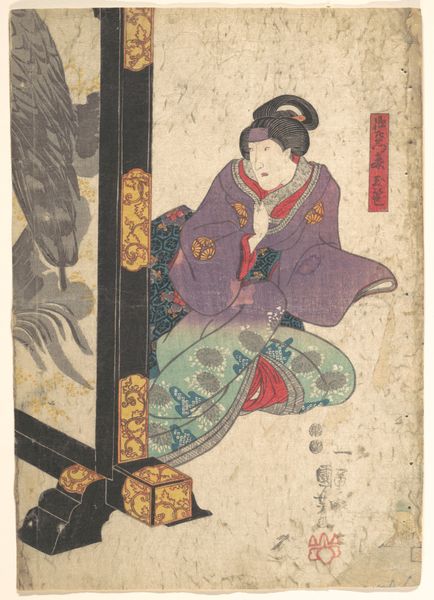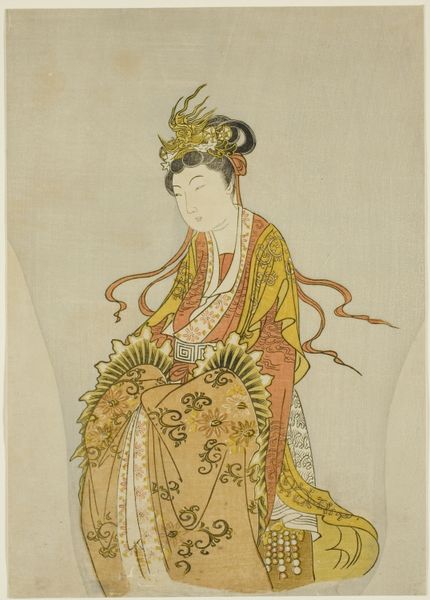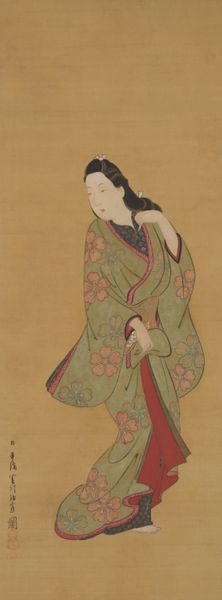
print, woodblock-print
#
portrait
# print
#
ukiyo-e
#
japan
#
figuration
#
woodblock-print
#
genre-painting
Dimensions: 14 15/16 × 9 3/4 in. (38 × 24.8 cm) (image, sheet, vertical ōban)23 × 19 × 1 1/2 in. (58.42 × 48.26 × 3.81 cm) (outer frame)
Copyright: Public Domain
Editor: Here we have "Fancy-free Type," a woodblock print created by Kitagawa Utamaro between 1792 and 1793. The work belongs to the Ukiyo-e tradition, a world of earthly delights, fleeting beauty, and intimate portraits. She seems poised and a little melancholic. What captures your attention in this piece? Curator: Well, isn’t she lovely? I find her particularly beguiling because of what's missing: color in her face, expressive eyes... it draws you in, almost whispering, "imagine her emotions." The flat planes, so characteristic of Ukiyo-e, make her seem timeless. It’s as though we are seeing a ghost of fashion and a glimpse into another's life, don't you think? Editor: Absolutely. And that patterned kimono... it hints at wealth and status. It feels almost photographic in its realism. I was also hoping to hear a bit more about Ukiyo-e itself. Curator: Think of Ukiyo-e as a window into the floating world – a snapshot, almost – of pleasure quarters, popular actors, beautiful women. What I find truly enchanting is how these prints, produced for a mass audience, elevated everyday life to art. They mirror back desire, ambition, humor...the full human condition, really. Don’t you agree it's democratizing art, centuries before photography would change art? Editor: That makes a lot of sense! Seeing this piece, understanding the historical context, it's really making me re-evaluate my preconceptions about Japanese art. It feels a lot more dynamic and relevant than I initially thought. Curator: Exactly! Isn't it fascinating how much you can unravel from seemingly simple image? The print pulls us closer across time and invites our own interpretation. Editor: Definitely food for thought. Thanks for shedding light on it!
Comments
minneapolisinstituteofart almost 2 years ago
⋮
After producing a few successful books, Utamaro and the publisher Tsutaya launched an innovative type of bijin-ga (pictures of beautiful women) series. It was the first to feature women in half-length portraits, a format previously reserved for yakusha-e (actor prints). It was also the first attempt by an ukiyo-e artist to represent the individuality of women. Except for the most famous prostitutes, print designers tended to depict women as stereotypes of femininity. Utamaro’s close-up portraits straightforwardly captured the facial expressions of his models, vividly evoking their personalities despite their anonymity. The woman shown here is identified on the print as the “fickle type.” To convey that quality, Utamaro has her casting a glance over her shoulder, hoping to catch the eye of an interested suitor as she returns, careless and disheveled, from the bath.
Join the conversation
Join millions of artists and users on Artera today and experience the ultimate creative platform.

